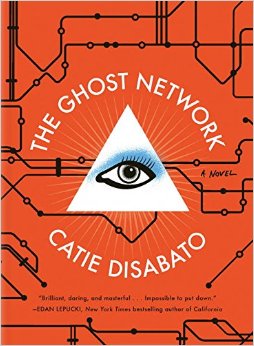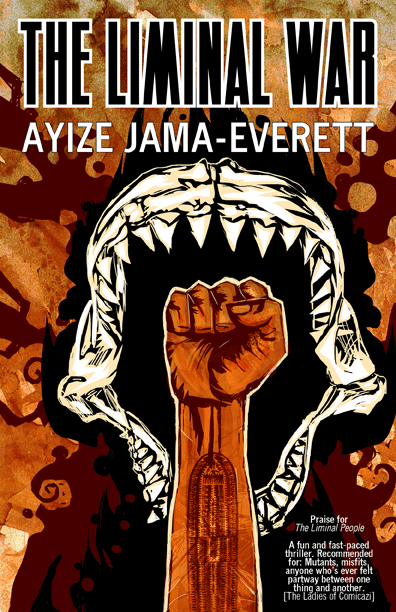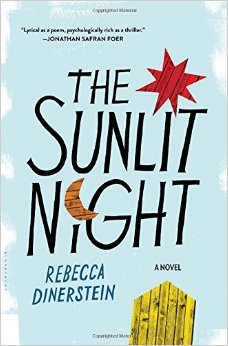More than a few summer vacations ago, I gave up on trudging through heavyweight classics when the July sun hits peak power. Because, let’s face it, The Brothers Karamazov and lounging next to the pool on a perfectly warm day just don’t mix. At the same time, unless you’re looking to a totally mindless reading experience, the formula thriller and romance books don’t often cut it. What about novels that balance page-turning tension with a sense of the literary? To that end, here’s a list of alternative “thrillers” (for most of these push the boundaries of the thriller) set for release in late spring and early summer.

The Ghost Network
By Catie Disabato
Melville House has a reputation for publishing boundary blurring literature and The Ghost Network doesn’t break from that tradition. Debut novelist Catie Disabato has created a plot that moves forward at a thriller-like pace, only to break form for meanders through, say, the history of the Situationists, or the Chicago Transit Authority.
The story opens after the mysterious disappearance of two women: Molly Metropolis and Cait Taer. Metropolis is a Lady Gaga-esque figure, an international pop star with more than a few secrets, including an obsession with the murky New Situationists. Taer is a struggling music journalist with a major Metropolis fixation. After months of retracing Molly’s last days, Taer “drowns” during a drunken outing on Lake Michigan. At the heart of The Ghost Network dwells a mystery, one told with through a split, foot-noted narrative and pieced together bits from journals, interviews, and addendums. As multiple narrators try to decipher exactly what happened to Molly Metropolis, who disappears one afternoon before one of the biggest performances of her biggest tour to date, the reader is taken along for a bumpy, challenging narrative ride, one that’s worth taking until the end of the line.

The Blondes
By Emily Schultz
Emily Schultz’s third novel takes something as innocuous as hair color and turns the whole thing on its head. The Blondes starts with a seemingly absurd premise: What if a terrible epidemic hit most of the blondes in the world, natural and dyed, turning them into rabid, violent beasts? At the novel’s center is Hazel Hayes, a red-headed Canadian grad student and recent arrival to Manhattan, there to finish her thesis, and escape a sad affair with her graduate adviser. Soon, she finds out she’s pregnant. Then, when a blonde businesswoman attacks a young female student at a subway station, without any provocation, Hazel witnesses the first attack of what will come to be known as “The Blonde Fury.” What seems like an isolated incident turns out to be the beginning of a terrifying worldwide epidemic. As Hayes attempts to journey home, she gets locked in a detention center for blonde women (and in-betweeners like herself) and witnesses a few more terrible incidents, including a heart-racing eruption involving a trove of killer flight attendants at JFK airport. The books drags at points, but for the most part, it’s rollicking breakneck satire, with a satisfying arc.

The Anger Meridian
By Kaylie Jones
The Anger Meridian opens with high drama. Merryn Huntley, a Dallas housewife married to a wealthy real estate mogul, is awakened by the local police with news that her husband, along with his young mistress, has been killed in a car accident. From the start, Huntley comes across as an unreliable narrator, which adds an extra layer of tension to the book. Did Merryn know about the affair before hand? Did she know about her husband’s shady business dealings and the millions of missing dollars hidden in a secret account? Within a few pages, she’s escaped with her nine-year-old daughter, to stay with her despotic, ex-pat mother in San Miguel de Allende, Mexico. It’s there that Merryn must come to terms with her husband’s true nature, as well as that of her beloved mother “Bibi.” The novel may follow the typical formula found in many romance-tinged thrillers (the handsome doctor who falls madly in love with Merryn at first sight, for example), but it maintains a lovely sense of place and character. There is a psychological depth to the story, especially in regards to a keen focus on mother and daughter relationships. Underlying this is a compelling mystery and a sense of tension that will keep readers moving fast through the story.

The Liminal War
By Ayize Jama-Everett
In the installment of his Liminal trilogy, Bay Area author Ayize Jama-Everett continues a rough-neck ride through a dystopian landscape as seen through the eyes of Taggert, a mercenary turned healer. Taggert’s adopted daughter Prentis has disappeared, most likely stolen away by his nemesis Norden. Taggert and his powerful Liminal daughter Tamara (within the first few pages she mentally knocks out half of London’s population after finding out about Prentis’ kidnapping) are determined to rescue their kin by any means necessary.
Liminals are a fascinating bunch and their ability to fluctuate dramatically between good and evil sets the book on a narrative tightrope. Explains Taggert: “Liminals – folks like myself, born with a variety of abilities and skills – tend to be . . . difficult. With no template of appropriate behavior, a Liminal with the ability to enter dreams can be a fairy godmother or a psychic racist. My brother, with hard telekinetic abilities, chose the latter route.”
Like Ursula K. LeGuin and Octavia Butler before him, Jama-Everett has a knack for braiding issues of spirituality and race throughout a compelling fantasy landscape. It wouldn’t hurt to read the first book in the trilogy, The Liminal People, to get background on this compelling group of characters.

The Sunlit Night
By Rebecca Dinerstein
Okay, The Sunlit Night isn’t really a thriller in the truest sense (no dead bodies or mysterious disappearances to solve), but it is, as Jonathan Safran Foer enthuses on the cover, “as psychologically rich as a thriller.” From the opening line, the novel, a first for poet Rebecca Dinerstein, is hard to put down. Here, the reader is introduced to Frances, an art student at the tail end of a three-month long affair that ends with a whimper not a bang. On returning to her parent’s tiny Manhattan apartment, where Frances and her sister share a tiny bedroom, she learns that her family is about to be blown apart by separation and marriage. Told in gorgeous, taut prose, Dinerstein sends Frances on a journey to the far north, to Lofoten, a tiny island in the Norwegian Sea, miles north of the Arctic Circle. “It was May, and I was interested in getting all of my light in one night-less season. Then hanging onto it. That’s what I needed, I thought, a lesson in either light-making, or light keeping,” thinks Frances, before embarking on her adventure. In those cold climes, Frances meets Yasha, a young baker from Brighton Beach. As too be expected, the two find solace in each other, and in the prospect of connection sans agony and alienation.



